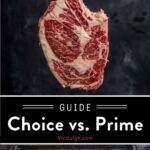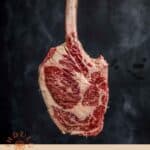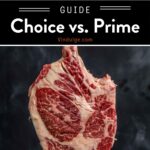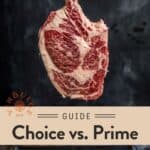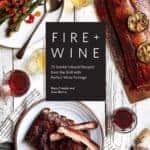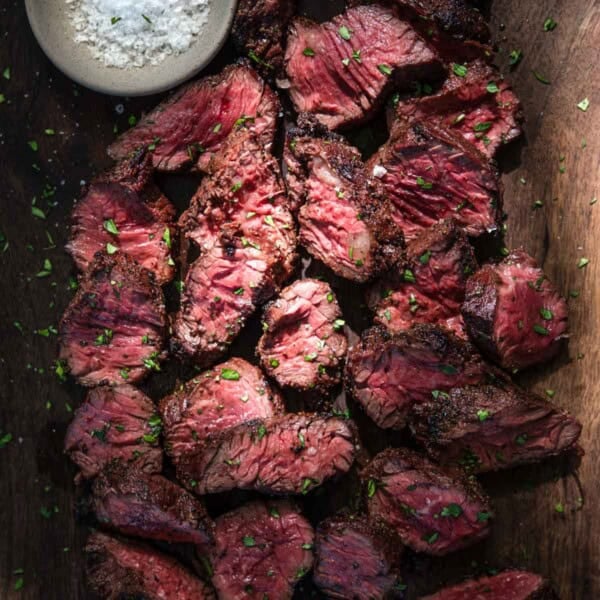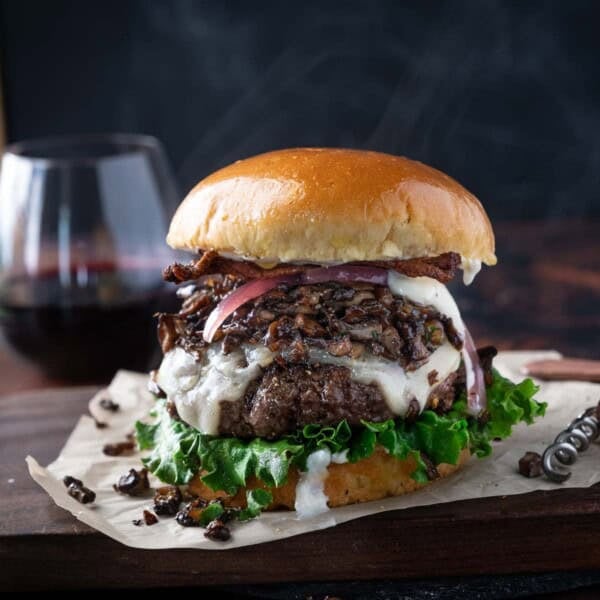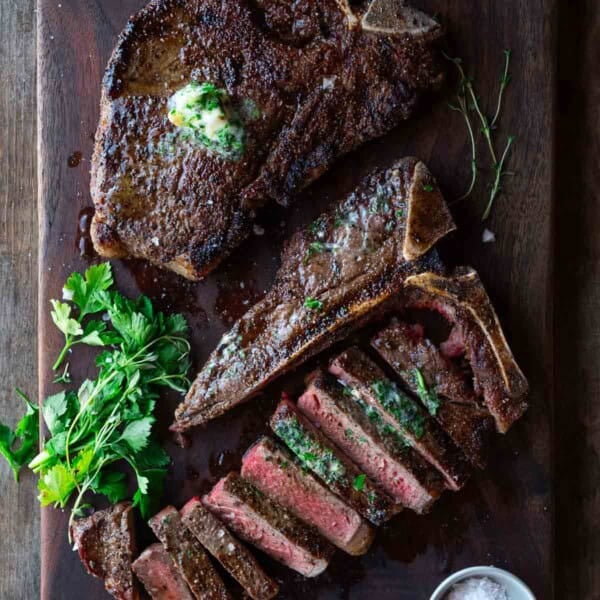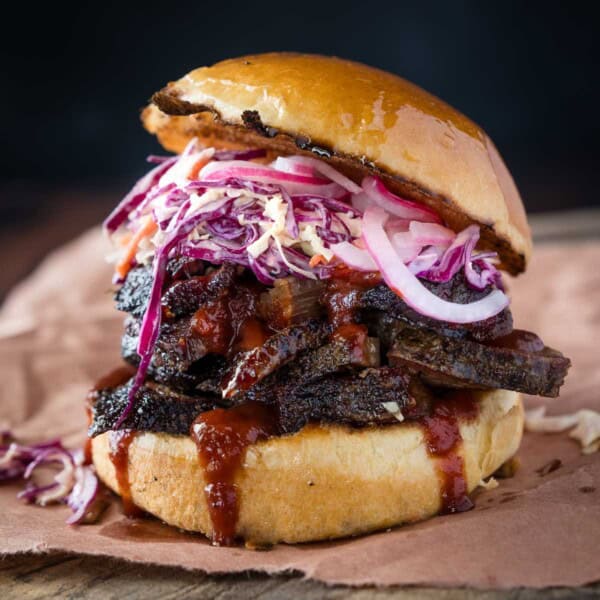Choice vs Prime – Which Quality is Best for Grilling and Smoking
Oct 01, 2020, Updated May 23, 2024
This post may contain affiliate links. Read more at our disclosure policy.
Which quality level of beef is best? The answer – It’s more than Choice vs Prime. Cuts of Beef range from grass-fed, to corn and grain feeds. But just because there is a grade does not mean that all beef is created equal. Choice vs Prime is a good start to define quality ratings, but let’s also talk about Grass Fed, Wagyu, and more.
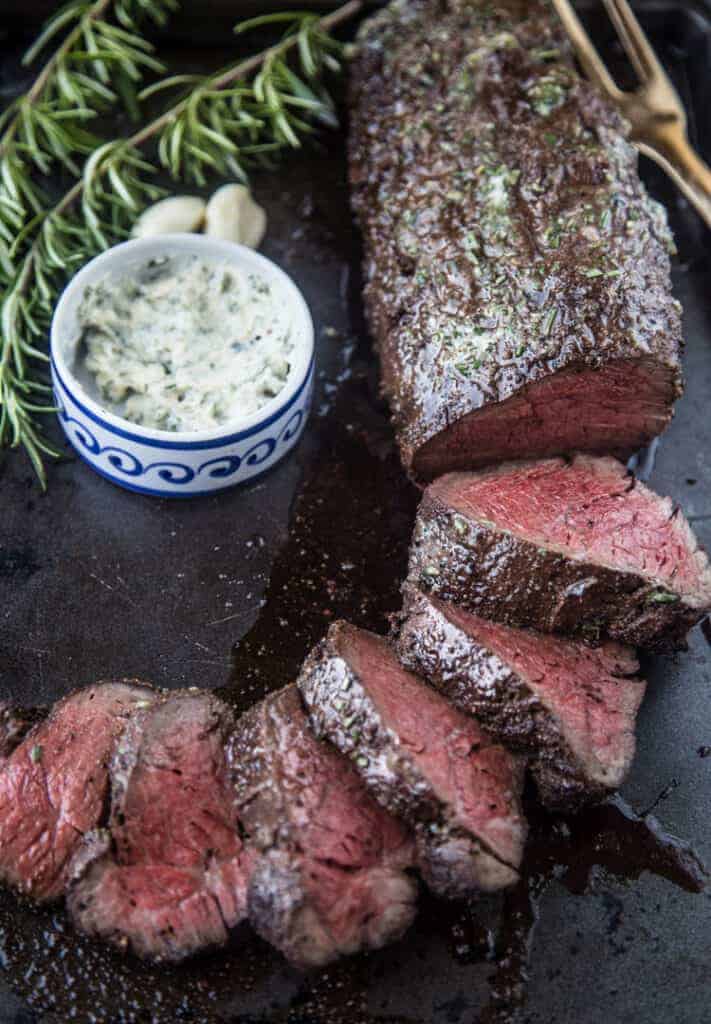
In the end, it comes down to flavor. And flavor comes from marbling and the beef itself.
When hosting a cooking class or catering event, a common question we receive is whether there is a real flavor difference between various styles and ratings of beef. This inevitably becomes a complex answer because of the diversity that exists throughout the US and World in how cattle are raised and how that reflects in the taste. So let’s dive a little deeper!
Table of Contents
What is Beef Marbling?
You’ll see that we reference marbling often on the Vindulge website. Marbling is the term that references intramuscular fat that shows up throughout the muscle tissue as white pockets or striations in the meat.
Generally speaking, the more the marbling, the more fat that the cut of meat has and the juicier the steak or roast can be if it’s cooked properly.
Marbling can be impacted through the breed of cattle, feeding practices, and other environmental factors. Different cuts are also more or less marbled than others because of how the muscles are used during the animals life.
Food Safety and Inspection Service
All beef in the US is inspected for food safety. That job is primarily run by the Food Safety and Inspection Service (FSIS), a part of the United States Department of Agriculture (USDA).
USDA Beef Grades Choice Vs Prime
The Agricultural Marketing Service (part of the USDA), created the official grade standards that you see today with the various “shields” stamped onto the meat packaging. Quality is primarily determined by the age of the cow and the marbling visible to the inspector when cut into the ribeye on a carcass.
The higher the grade, the more marbling, tenderness, and flavor will generally be present.
- Select – The leanest of the primary grades. Small pockets of marbling, tender, and still flavorful, it will present the least marbling among the three main quality grades.
- Choice – A good quality grade with moderate marbling, also tender and with rich flavor. Within choice there is also sub categories like top third choice.
- Prime – The highest quality and most marbling based on the USDA Rating system, with younger, well-managed cattle, rich and visible marbling throughout.
The less common beef grades include:
- Standard & Commercial – Very little fat content. If you see this in a store, it will not have a shield and you will see little to no marbling throughout the cut.
- Cutter & Canner – Unlikely you will see these at a store. It’s often older cattle and reserved for processed meat or canned goods.
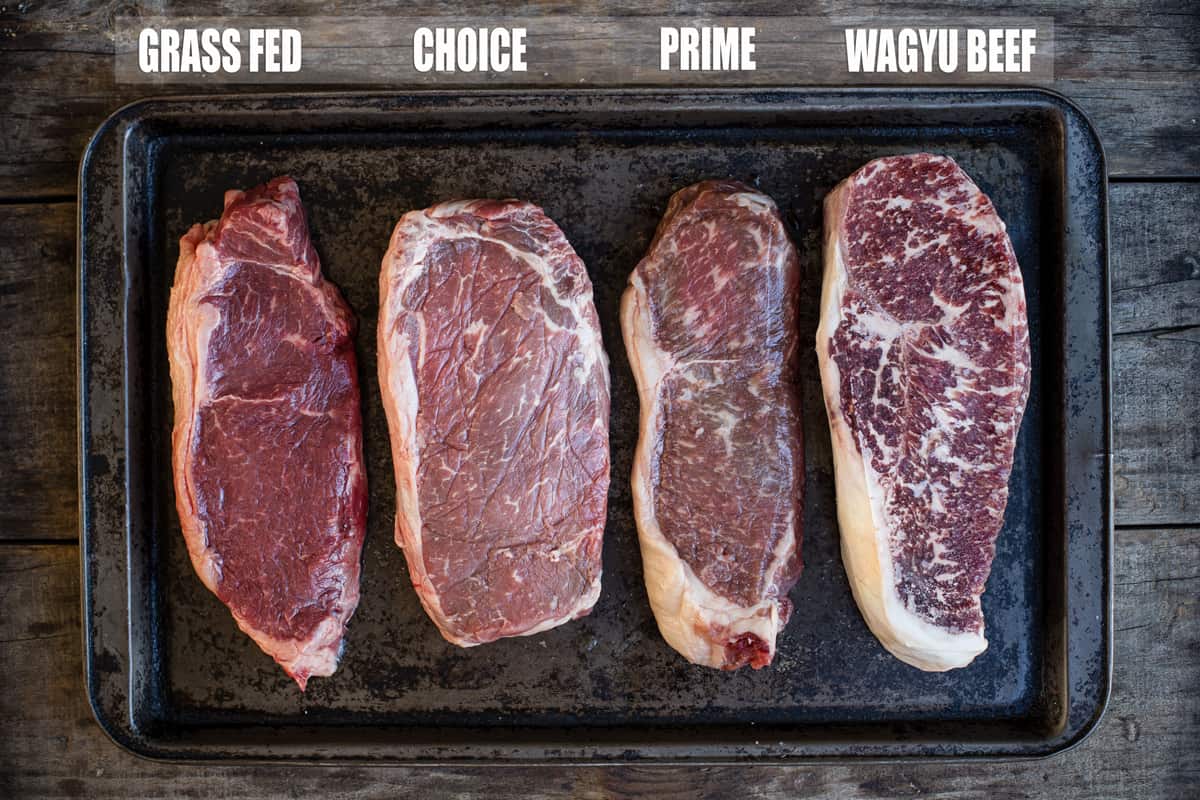
All beef is inspected for food safety, but not all beef is graded. The decision to get a grade is a voluntary choice by the producer of the beef or the actual processing facility staffing a grading inspector. This is important to understand as you purchase meat, because some smaller local ranchers may choose not to have the grading done, but still have amazing quality beef that rivals one of the formal gradings.
Notice there is no mention in the grading about grass fed, organic, or other specific names. USDA rating is agnostic of how the livestock is actually raised. And especially with Choice vs Prime, the real driver of quality ratings is the marbling. Over the years, US cattle producers have continued to focus on ranching and feed practices that have increased the marbling quality yielding more choice beef than in prior decades.
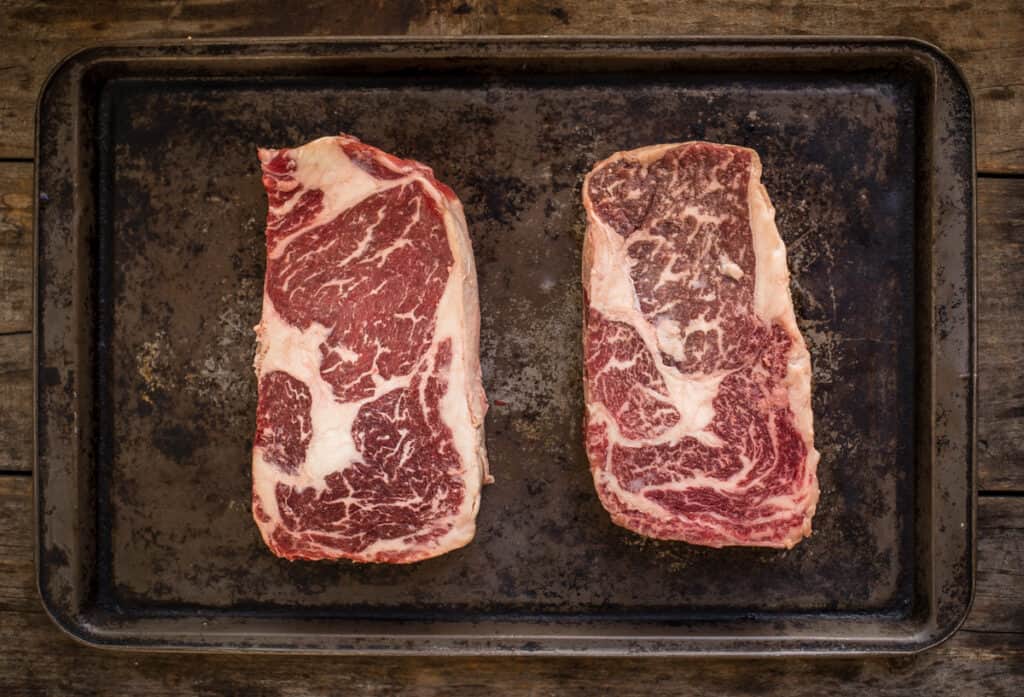
The Difference Between Grass-Fed and Grain-Fed
All cattle start and are raised in a pasture. So all cattle are grass fed.
Some ranchers will elect to feed their cattle only from what is available on the pasture (grass). That means no additional feed, like grains or corn to supplement the grass (pasture). This will also be regional because in some northern climates, there is not grass throughout the year.
As cows mature, a rancher may elect to supplement the pasture with other feed options. The most common are grain mixes including corn, food grade byproducts like spent brewers grains, corn flakes, and other products. But as ranchers seek out new and innovative ways to create more flavor, other feed options are emerging like finishing with carrots.
For grilling and barbecue, marbling adds more flavor and moisture to what we’re cooking.
For low and slow cooking (“smoking” or “barbecuing”), look for marbling or at least choice graded beef. The marbling provides superior flavor and tenderness.
When grilling (hot and fast) this is a good opportunity to seek out grass fed or unique local ranchers too. Grass fed cow are delicious and have their own unique flavor profile. Since they are leaner, the hot and fast method prevents overcooking a leaner cut of meat.
American Wagyu
American Wagyu is a combination of Japanese cattle breeds and American cattle, most often Angus. The marbling produced can rival and exceed that of Prime and have their own rating system mirroring the Japanese version. Don’t assume all Wagyu will be incredibly marbled. Some may be marketed as Wagyu from other countries or grass fed.
Snake River Farms is an example of a producer that focuses on highly marbled and highly prized beef from the Northwest with a buttery flavor and texture.
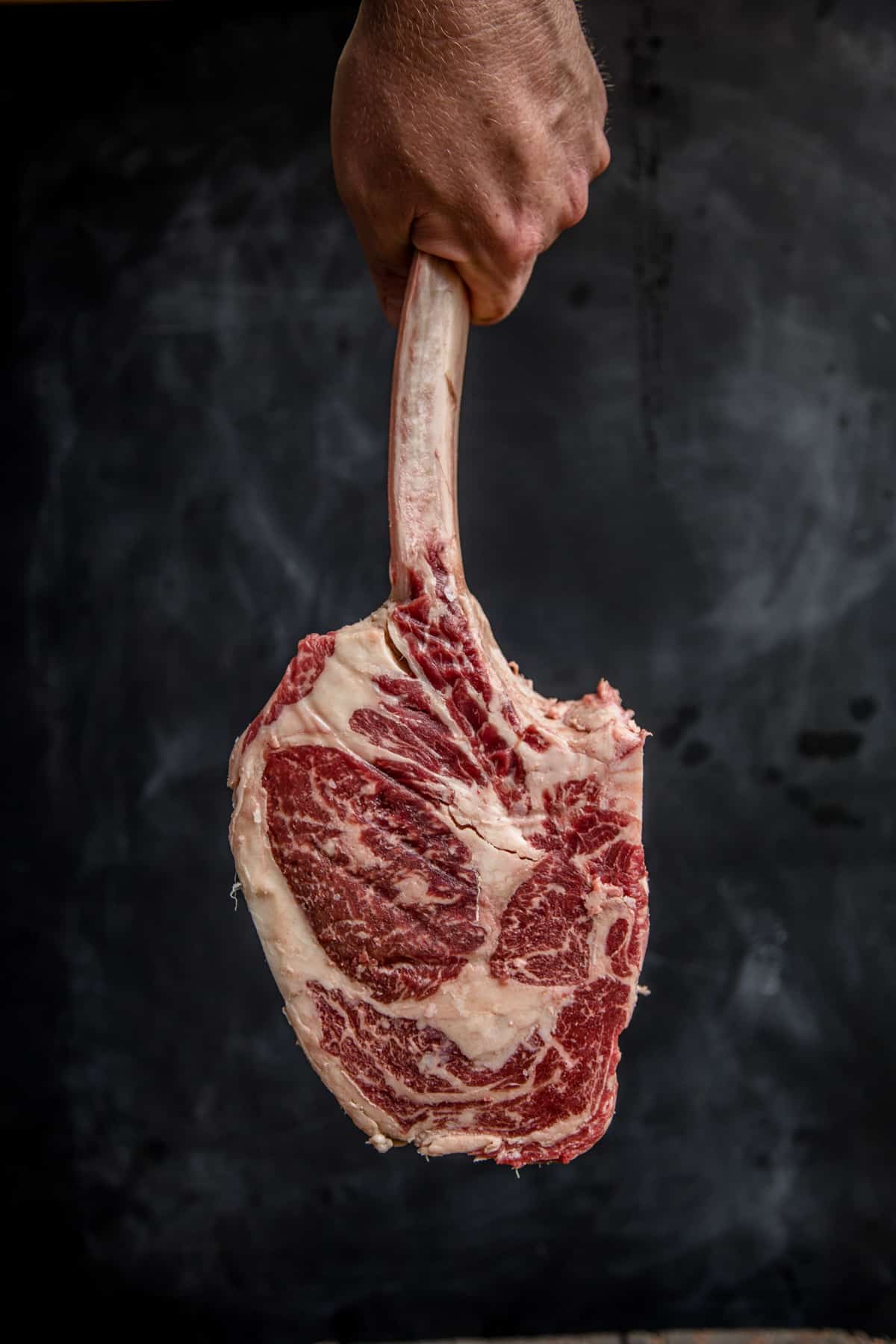
Cattle Breeds
The reality is that most consumers won’t know what breed of cattle is in the packaging. And that is ok, because over time most ranchers wake up every day trying to find the right balance of breed that works in their respective microclimates and that provide a quality yield of beef with the most flavor.
Another item to consider when judging the quality of beef is the type of cattle that make up the steak. Cattle are bred together to create specific profiles in the flavor and marbling. Angus (Black and Red) are some of the most common form of beef cattle because of the fast maturity and natural marbling. Other breeds include Charolais, Hereford, and Japanese Wagyu breeds.
Would you like to save this?
You may see the acronym CAB or “Certified Angus Beef”. That is an organization or brand versus the breed. They have their own certification process when allowing a certain beef cut to be CAB certified.
Whether Choice vs Prime or Wagyu, quality cattle management provides superior flavor and marbling. Want to hear the passion of breeds? Go pick up some steaks at your local rancher and ask. There is a lot of investment and thoughtful decisions in a quality herd.
Buying Steak
Now that you have some additional information in your hands, is there such thing as a perfect steak to buy? It depends on what you are cooking. The most important advice we can offer is to buy the best quality you can afford, or find and to look for good marbling. Remember that local ranchers may have Choice or Prime worthy beef, but elect not to pay for it or have access to facilities that staff an quality rater (versus inspector). So put eyes on those steaks and make the call based on what you see.
- Grilling – Whether Prime grade or a grass fed local cut, grilling is a great option for any steak. Grass fed will cook a little faster and benefit from a hot fire to quickly sear the outside. More marbling can handle more heat, so reverse searing may be the best option to smoke low and slow and finish over high heat.
- Smoking – Marbling helps with flavor and texture. A brisket without marbling is difficult to cook without overcooking or coming out dry. Smoking Brisket benefits from the higher marbling content. Only have Select or a grass fed version? Then supplement with an injection to offset the lack of the marbling for added moisture and flavor.
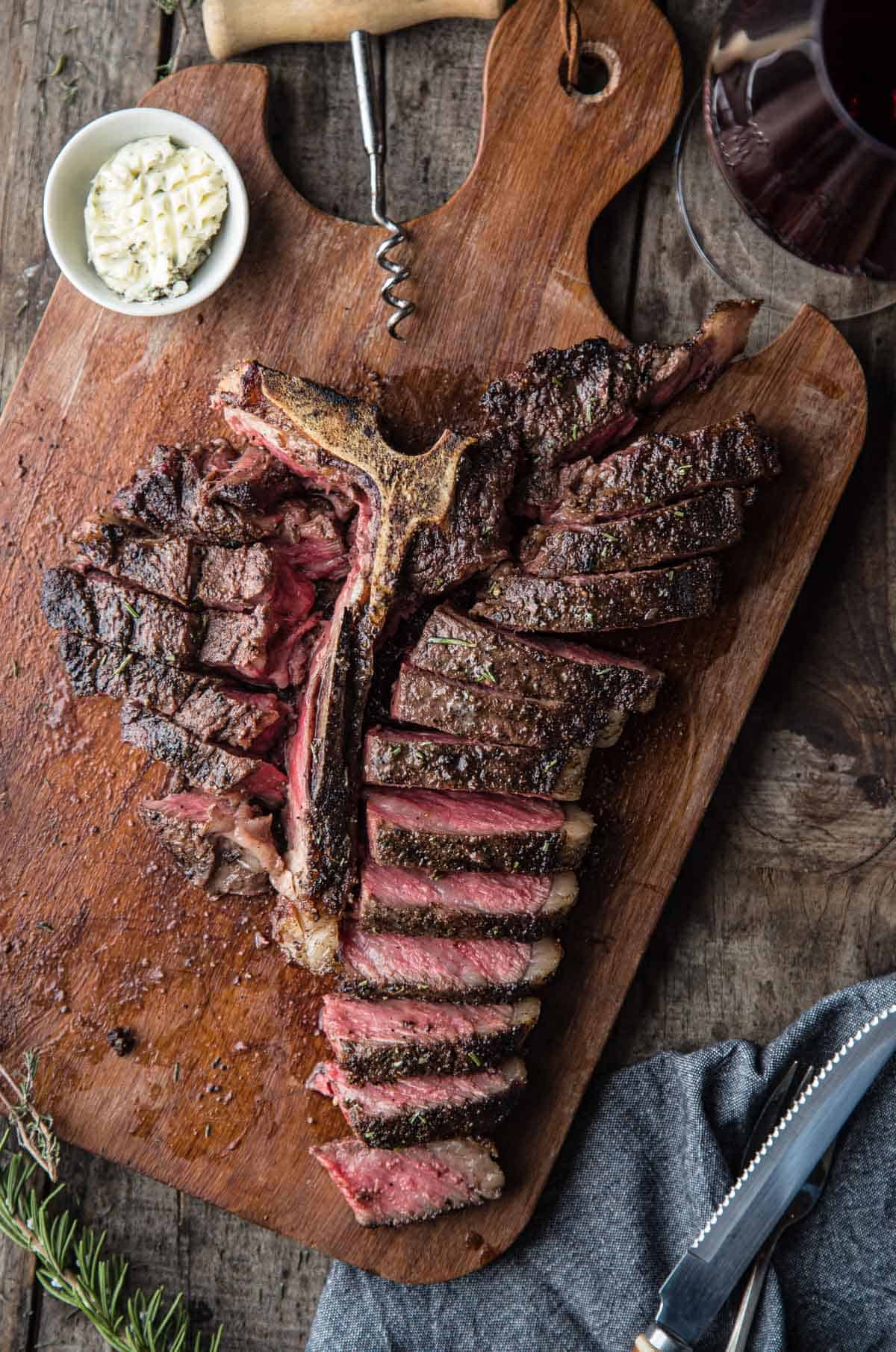
Brisket Quality
We get the question all the time, what kind of quality should I buy when purchasing brisket? When buying brisket should you go prime? Well, the short answer is you don’t have to. Buy what you can afford. The more marbling, the juicier it will tend to be. But a prime or American Wagyu brisket can run at least $100 – $150 USD (or more).
American Wagyu and Prime will have incredible marbling. When trimming you’ll also be removing the most amount of fat. Save it and render it for amazing beef tallow.
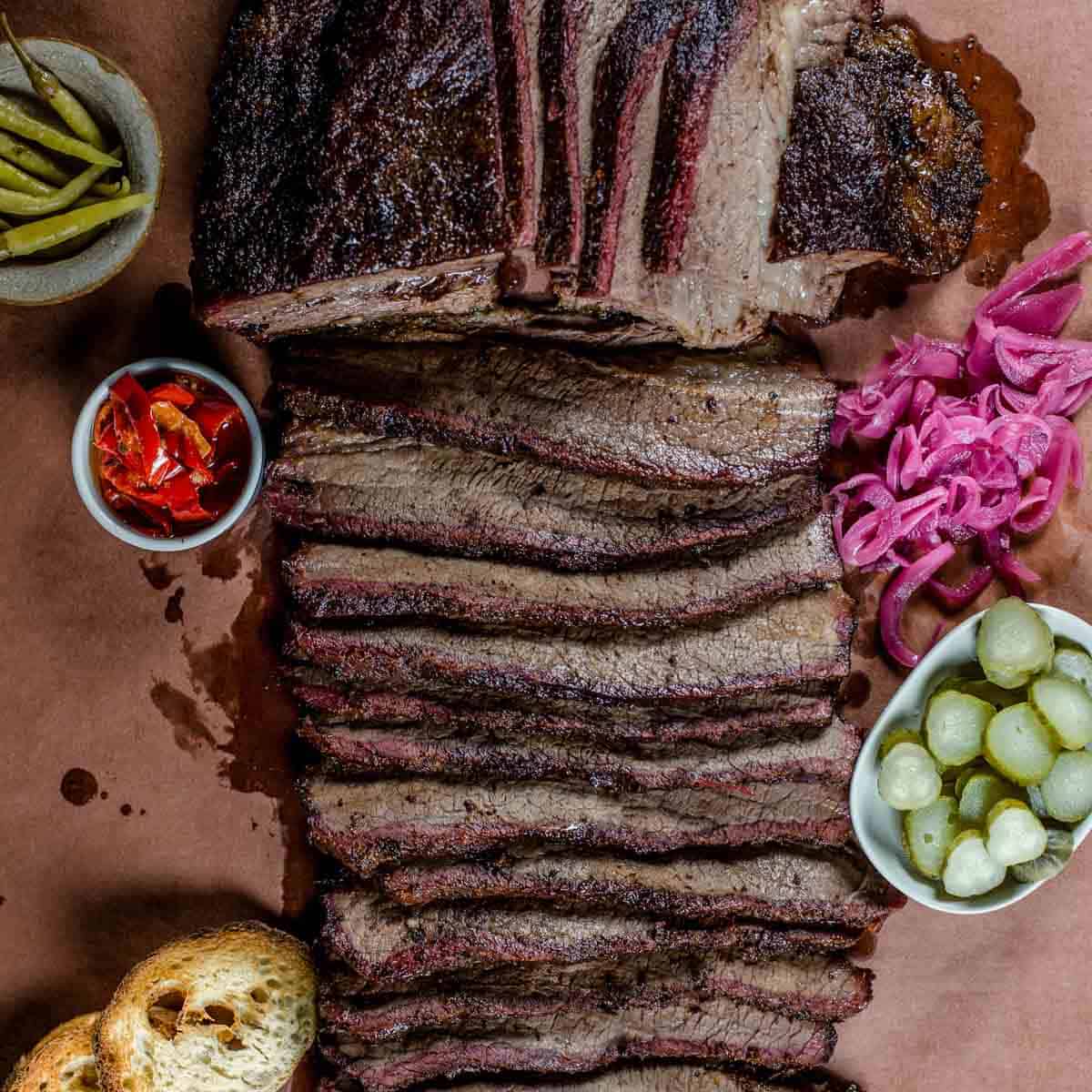
Choice graded will have great marbling and still have great texture when it’s smoked. We will most often buy a choice brisket when we are cooking on the weekends.
Select or grass-fed have very little marbling. We recommend if this is all you can find that you inject it with a beef injection. The brisket flat will always be leaner than the point which is the brisket muscle used for brisket burnt ends.
Brisket Buying Tip
The more important factor when buying brisket is to make sure a whole brisket is pliable and loose when you pick it up. It should not feel stiff. The more it wiggles before you cook it the better it will be as you cook and rest it. If you don’t have brisket near you, check out our recommendations for the best places to order brisket online.
Beef Roasts
Similar to brisket, any roast like Prime Rib, Tenderloin, or Tri Tip will generally have more marbling the higher the quality level. That marbling will melt as it cooks and that becomes flavor.
When selecting roasts we apply the same tip – buy what you can reasonably afford. A choice roast is going to be delicious. If you can afford Prime – that added flavor will show up in the final product.
If you have a leaner roast add a compound butter at the end of the cooking process to add more fat and texture to the bite. It’s a great way to supplement the leaner profile of the meat.
Best Grilled Steak Recipes
Some of our favorite and most popular grilled steak recipes:
- Reverse Sear Ribeye Steaks
- Coffee Rubbed NY Strip Steak
- Grilled T-Bone steak
- Grilled Flat Iron Steak
- Hanger Steak with Wine and Berry Sauce
Smoked Beef Recipes
Featuring some of our best smoked beef recipes. Typically these are larger cuts that can use time to break down the fat and get tender and packed with flavor.
- Prime Rib on the Smoker
- Smoked Beef Short Ribs
- Reverse Sear Beef Tenderloin
- Red Wine Marinated Tri Tip
- Cowboy Ribeye Wagyu Steaks
Our Cookbook
Check out our critically acclaimed cookbook, Fire + Wine, for more great inspirations for the grill or smoker.
About Vindulge
Mary (a certified sommelier and recipe developer) and Sean (backyard pitmaster) are co-authors of the critically acclaimed cookbook, Fire + Wine, and have been creating content for the IACP nominated website Vindulge since 2009. They live in Oregon on a farm just outside Portland.
